Resolution of the 13th National Congress of the Party sets the target: By 2025, the 50th anniversary of the complete liberation of the South and national reunification, Vietnam is a developing country with industry in the direction of modern, surpassing the low-middle income level; By 2030, the 100th anniversary of the founding of the Party, Vietnam is a developing country with modern industry and high middle income; By 2045, the 100th anniversary of the country’s founding, our country will become a developed, high-income country. Building a circular economy was identified by the Congress as one of the country’s development orientations for the period 2021 – 2030 to achieve the Sustainable Development Goals by actively implementing environmental protection actions, respond to climate change on a large scale in the next 10 years.
Since the middle of the 20th century, the rapid increase in population, the pressure of growth, the process of urbanization, industrialization, the demand for fuel and energy consumption have led to a sharp increase in the exploitation of natural resources. environmental pollution and climate change. The 2030 Agenda for Sustainable Development, adopted by all United Nations member states in 2015, sets forth a common plan for peace and prosperity for people and our planet in the present. present and future, calls for urgent action by all countries to protect the land, water, and air environment, protect biodiversity, conserve forests, seas and oceans and solve problems of climate change towards a carbon-neutral, zero-emissions economy by 2050. Economic shift towards circular economy, green economy(1), low-carbon economy( 2) is an inevitable trend of the times, is globally agreed and is considered by countries around the world as the green industrial revolution of the 21st century, an opportunity for the global community to join hands to fulfill its commitments. international organizations in the field of environmental protection and climate change response in order to achieve sustainable development for the health of the people, the natural environment and the Earth.
The complicated development of the Covid-19 pandemic has affected all aspects of global socio-economic life, changed people’s perceptions around the world, and deepened the demand for model change. growth towards sustainable development. In this context, many countries in the world, such as the countries of the European Union (led by the Netherlands, Germany, Finland and Denmark), Canada, the United States, China, Japan, South Korea and Singapore are making a dramatic transition to a circular economy. In Vietnam, the Party and State have promulgated many guidelines and policies on transforming the growth model towards sustainability; strengthen resource management, environmental protection, response to climate change; increase recycling and reuse of waste. The Resolution of the 13th National Congress of the Party has identified building a circular economy as one of the country’s development orientations for the period of 2021 – 2030. In the coming time, a central resolution is needed on Circular economy in Vietnam affirms the responsibility of the whole political system, of the whole society and the obligation of all citizens to learn from the experiences of other countries and apply them to practice in Vietnam to take advantage of the opportunities for cooperation in receiving and transferring technologies in design, manufacturing, and digital transformation in order to successfully develop the circular economy in Vietnam.
Currently, the Ministry of Natural Resources and Environment is developing criteria, roadmap and mechanisms and policies to promote circular economy in Vietnam. It is an economic model in which design, manufacturing, and service activities aim to prolong the life of a material, and eliminate its negative impact on the environment. In essence, the circular economy is not only the reuse of waste, considering waste as a resource, but also a connection between economic activities in a pre-calculated manner, forming a cycle in the environment. economy. The circular economy can keep the material flow in use for as long as possible, restoring and regenerating products and materials at the end of each production or consumption cycle.
The issues of sustainable management and use of natural resources, environmental protection and response to climate change have been fully recognized by the whole society. Therefore, campaigns on environmental protection such as combating plastic waste have been actively responded and participated by the business community and people across the country. A number of new models have been formed to move closer to the circular economy, such as: ecological industrial park model in some localities; initiative “Do not discharge into nature” initiated by VCCI; model of processing aquatic by-products; Vietnam Packaging Recycling Alliance; Vietnam’s global plastic partner; Currently, the business community is also actively responding to the circular economy model… These examples, when summarized and evaluated based on basic principles and criteria, will contribute to supplementing, complete circular economy for Vietnam.
However, Vietnam still faces many challenges, such as not yet forming an environmental industry; there is a lack of qualified enterprises in technology for recycling and reusing used products and materials; Most Vietnamese enterprises are small and medium sized, difficult to invest in technological innovation in the short term, difficult to immediately change the production and consumption habits of the whole society today for many products. easy to use such as plastic bags, disposable plastic products to switch to using only materials and products that can be fully recycled and reused. Recognizing the inevitable requirement of the circular economy, the Law on Environmental Protection 2020 has institutionalized a number of mechanisms and policies to promote the circular economy, such as sorting waste at source. , waste charge based on volume, recycling, reuse of waste; extended liability of the manufacturer; economic tools and policies such as natural resources tax, environmental protection fee; green shopping, green credit, green bonds, carbon market development, environmental industry development, environmental services…
Right from the early years of the decade 2021 – 2030, it is necessary to focus on implementing many solutions to promote the circular economy in Vietnam in order to take advantage of cooperation opportunities in accessing and receiving technology transfer and transfer. change numbers to serve the country’s sustainable development. In particular, the State plays a leading and constructive role, businesses establish a management system, implement and comply with legal regulations, people must raise awareness, sense of responsibility, carry out supervision. community, promoting the role of mastery in building and developing circular economy in Vietnam. Specifically, it is necessary to implement a number of measures to promote the development of the circular economy as follows:
Firstly, it is necessary to consider the development of the circular economy as an indispensable solution to renew the growth model, improve the quality of growth, improve the national competitiveness, ensure sustainable production and consumption, contribute to solving social problems, creating jobs, eradicating hunger and reducing poverty; allocate, manage and effectively use resources, protect the environment and respond to climate change. Proposing the XIII Central Committee to consider promulgating a resolution on promoting circular economy development.
Second, lead and direct the review, amendment, supplement and promulgation of new mechanisms, strategies, policies and laws to promote circular economy development, in line with the Party’s guidelines and trends. In the new world, regulations and standards have been formed in the region and on a global scale.
Thirdly, ministries, ministerial-level agencies and provincial People’s Committees shall integrate circular economy right from the stage of developing development strategies, master plans, plans, programs and projects; waste management, reuse and recycling. Considering natural resources as a source of natural capital that needs to be accounted for, monitored, evaluated and proportionately balanced with other capital sources in the process of policy making and administration at all levels, sectors and fields. Consider waste as a valuable resource that can be recycled, reused, created jobs and added value to the economy.
Fourth, bring into play the strength of the entire political system, thoroughly grasp the Party committees and authorities at all levels; strengthen propaganda widely throughout the society about the role, meaning, benefits and importance of circular economy development; integrate the requirements of circular economy development into the lives and practices of people, communities and society as a whole.
Fifth, implement solutions to transform the economic model such as adjusting energy planning, gradually reducing dependence on forms of energy from fossil fuels, hydroelectricity; building a roadmap for technology and digital transformation based on energy efficiency and saving criteria, minimizing waste.
Sixth, specify the manufacturer’s specific responsibilities for the recovery, recycling or disposal of discarded products based on the number of products sold in the market; develop environmental industry, market for environmental goods and services, environmentally friendly products…; project management according to the life cycle, establishing a roadmap for the development and application of environmental regulations and standards (emissions and technology) equivalent to the group of advanced countries in the region.
Seventh, focus right from the planning, planning, production design, product design to strengthen the connection of the circular production chain. Select a number of industries and fields of industry, agriculture and services to follow the circular economy model such as: paper industry, iron and steel production, thermal power, and cycle water management. To develop urban centers, industrial parks, export processing zones and thermal power centers according to the circular model. Develop a set of indicators and criteria to monitor, evaluate and apply policies to encourage the transition to a circular economy at the national, regional and local levels, including contents on effective use of resources , resource consumption, waste utilization and emissions.
Eighth, building a market institution, promoting the application of market-based tools in the fields of resource management and environmental protection to encourage technological innovation, management methods, and consumer behavior. use of society in the direction of exploiting, rationally and more effectively using the natural capital that nature bestows on the economy, avoiding the trap of resource curse; encourage better utilization of the economy’s waste, preserve and protect the ecological environment, improve the resilience of natural systems and the resilience of the economy to natural shocks disease, and climate change.
Ninth, promoting research and application of science and technology, taking digital transformation and applying achievements of the industrial revolution 4.0 as a driving force in circular economy development.
Effective management, allocation and use of natural resources, environmental protection, proactive response to climate change, and natural disaster prevention and control are urgent requirements to promote sustainable development of the country. The Party cares about leading and directing with many guidelines, strategies and policies of the era. The circular economy is identified by the world as a total solution towards sustainable development. The Resolution of the 13th National Congress of the Party has identified building a circular economy as one of the country’s development orientations for the period of 2021-2030, a solid basis for us to believe in the development of the circular economy. successfully take advantage of opportunities and transform challenges to develop a circular economy, contributing to the management, allocation, exploitation and efficient use of natural resources, environmental protection and response effective with climate change, sustainable socio-economic development of the country until 2030, with a vision to 2045.
Doctor. Tran Hong Ha
Reference: https://nhandan.vn/dang-va-cuoc-song/phat-trien-kinh-te-tuan-hoan-de-quan-ly-va-su-dung-hieu-qua-nguon-tai-nguyen-641799/
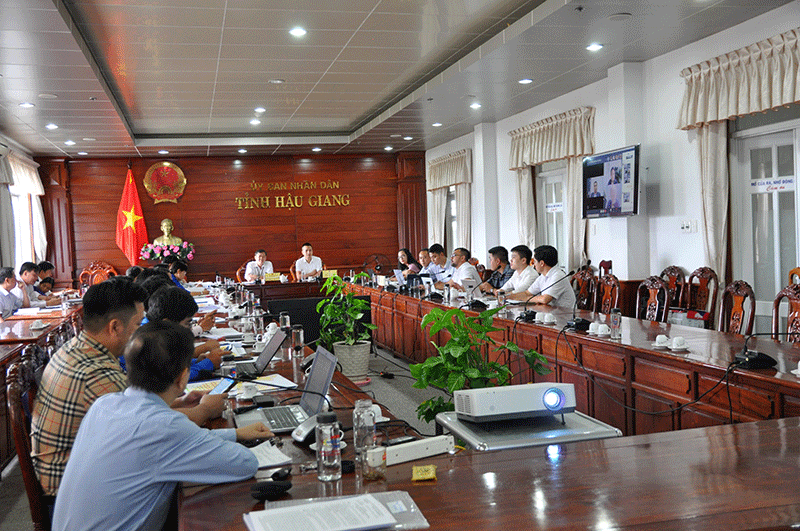
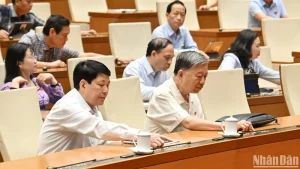
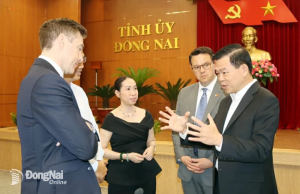
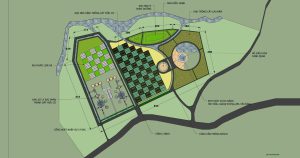
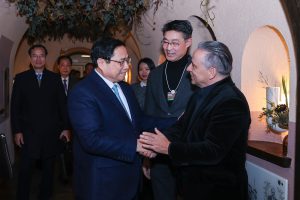
Leave a reply